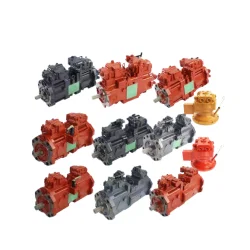The Versatility and Importance of Hand Pumps in Everyday Applications
2024-09-02
Hand pumps are simple yet powerful tools that have been used for centuries to move liquids from one place to another. Despite advancements in technology, hand pumps remain essential in various settings due to their reliability, ease of use, and versatility. In this blog, we’ll explore the different types of hand pumps and their applications, showcasing why they continue to be indispensable in many industries and households.
1. What is a Hand Pump?
A hand pump is a manually operated device designed to move liquids by creating a vacuum or pressure that draws the liquid into a chamber and then expels it through an outlet. They are typically used in situations where electricity is unavailable, or a portable, low-cost solution is needed.
2. Types of Hand Pumps
There are several types of hand pumps, each suited to different applications:
- Piston Pumps: These are the most common type of hand pumps, using a piston to move liquid through a cylinder. They are often used for water wells, where they can efficiently draw water from underground sources.
- Diaphragm Pumps: These pumps use a flexible diaphragm to create suction, making them ideal for moving viscous liquids, slurries, or chemicals.
- Siphon Pumps: Siphon hand pumps rely on gravity and suction to move liquids from one container to another. They are often used for transferring fuel, oil, or water between tanks or containers.
- Rotary Pumps: Rotary hand pumps use a rotating mechanism to move liquids, making them suitable for transferring oils, chemicals, and other fluids from drums or tanks.
3. Applications of Hand Pumps
Hand pumps are used across various industries and situations:
- Water Supply in Remote Areas: In rural or remote areas without access to electricity, hand pumps are a vital source of clean drinking water. They are commonly installed over wells, providing a simple and effective way to access groundwater.
- Emergency Situations: During natural disasters or power outages, hand pumps can be a lifesaver, providing access to water and other essential liquids when electric pumps are unavailable.
- Agriculture and Irrigation: Farmers use hand pumps to draw water from wells, ponds, or tanks to irrigate crops. They are also used to dispense pesticides, fertilizers, and other liquids.
- Fuel and Chemical Transfer: Hand pumps are widely used in industries that require the safe transfer of fuels, oils, and chemicals from large containers to smaller ones, or directly into machinery.
- Marine and Automotive: In boating and automotive maintenance, hand pumps are used for tasks like siphoning fuel, pumping out bilge water, or transferring oil.
4. Benefits of Using Hand Pumps
Hand pumps offer several advantages that make them an essential tool in various applications:
- Portability: Hand pumps are lightweight and easy to transport, making them ideal for use in remote or off-grid locations.
- Durability: Built to withstand harsh conditions, hand pumps are often made of corrosion-resistant materials like stainless steel or high-quality plastics, ensuring a long service life.
- Ease of Use: Hand pumps are straightforward to operate, requiring minimal training or technical knowledge.
- Cost-Effective: Without the need for electricity or complex components, hand pumps are an economical solution for many liquid transfer needs.
Conclusion
Hand pumps continue to play a crucial role in a wide range of applications, from providing drinking water in rural communities to transferring fuels and chemicals in industrial settings. Their simplicity, reliability, and versatility make them an invaluable tool that stands the test of time.



